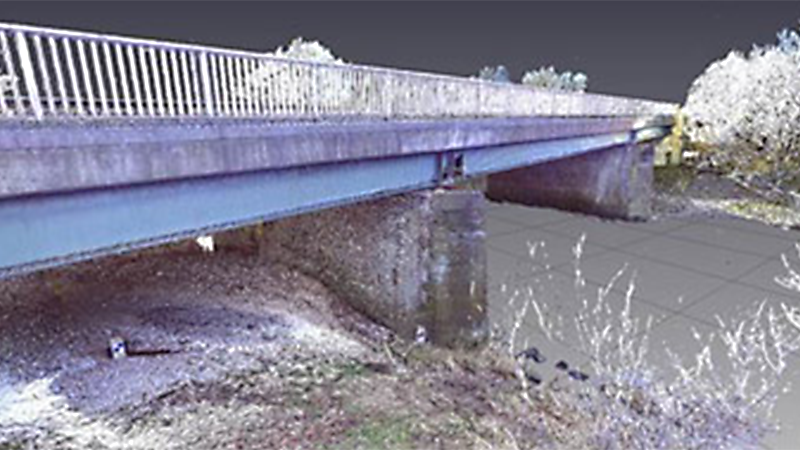It is no secret that where large-scale major investment is concerned in the current economic climate, infrastructure is a serious front-runner. As one component of a multi-pronged assault on rectifying the UK’s extensive debt crisis, Cameron’s government has pledged billions to the preservation and vast improvement of the country’s arterial infrastructure systems in the hope of stimulating a kick-start for the country’s long-term economic growth. With high-profile projects such as HS2 and Crossrail at the vanguard of the £36billion major infrastructure investment plan, the subject of national infrastructure has become one of 2014’s hot topics. We caught up with Ted Harland of Tri-tech Site Engineering and Land Surveys in a bid to get the inside scoop on one of this year’s largest projects; the high profile £300million upgrade of the A1 between Barton and Leeming, that upon completion will see journey times in the area cut by as much as twenty percent.
Tri-tech themselves are a Yorkshire-based surveying and site engineering company, who since 2005 have gained a solid reputation in supporting and facilitating project success for both public and private sector clients.
The Lowdown
“The project is essentially a £300m upgrade of the existing A1 dual carriageway to 3 Lane Motorway”, explains Harland, MD of Tri-tech, “upon completion, the project will also provide a number of local access roads to serve the local community, and significantly improve safety in the area [which at present lacks the local access roads necessary to accommodate the area’s numerous agricultural vehicles.”
Falling beneath the broad umbrella of major infrastructure projects for 2014/15, the A1 upgrade sets the tone for contemporary project process in its use of 3D Laser Scanning Technology, as well as the firm insight into futureproofing the venture’s work through BIM (Building Information Modelling) workflows. “There has been a big push nationwide to start to deliver projects through BIM”, says Ted; “This in turn with the recent development of Scanners, PC Software, and PC Hardware has meant that now more than ever 3D laser Scanning has become a viable option for data collection for this kind of project.”
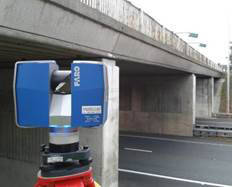
“We have used Optical for number of years now for the supply and service of all our equipment …Their support and service is second to none”
“We were asked by the Morgan-Sindall Carillion Joint Venture (MSCJV) project team to survey a number of existing bridges for the structural design team to process”, he explains, “some of the existing bridges are to be kept, as well as a number modified to suit a new 3 lane Motorway. After having various discussions with the design team about their specific requirements, and whether they could handle such large amounts of scan data, Tri-tech choose the Faro Focus3D X330 model for the job largely because it has the ability to scan at a far longer range than its predecessor (the S120) while still producing high quality scan data.”
Since its arrival on the market last year, the Focus3D Laser Scanner from global manufacturing powerhouse FARO has evolved in tandem with the changing requirements of the survey teams using it. In November last year, the first of the X series units – the X330 – was launched, boasting considerable range and a state of the art class 1 laser, whilst maintaining the compact 5kg housing that has afforded this particular brand of scanner well-earned industry-wide recognition. “In the past we have used the Focus3D S-120 to scan a number of buildings for a client”, he says, “The results were excellent, however on this project we knew we required the additional range of the X330 to confidently scan the structures from both sides of the carriageway and get good results. Because we only have access to the side of the motorway sometimes the distances needed to be scanned would have been right at the limit of the S-120, which is why we went for X330. In terms of the hire itself, we have used Opti-cal for number of years now for the supply and service of all our Leica equipment and so it was natural progression for them to supply the scanner and all accessories. Their support and service is second to none.”
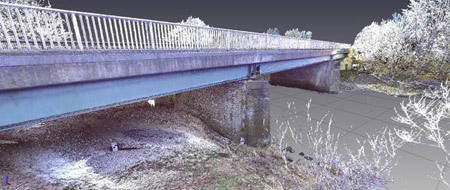 “The [sheer] level of detail obtained from the surveys has left a number of the design team speechless, and has allowed [the highly] accurate modelling of existing structures.”
“The [sheer] level of detail obtained from the surveys has left a number of the design team speechless, and has allowed [the highly] accurate modelling of existing structures.”
Speaking about the data captured at the site, Peter Robinson of AECOM’s specialist design team said, “The use of the X330 FARO scanner by Ted Harland of Tri-tech has provided the A1 Dishforth to Barton structures design team with invaluable information. The [sheer] level of detail obtained from the surveys has left a number of the design team speechless, and has allowed [the highly] accurate modelling of existing structures.” He continues; “thanks to the coordinated point cloud obtained from the surveys conducted, we discovered that the original surveys carried out [at the site] were in fact inaccurate, which could easily have led to costly issues on site.”
Here, Robinson highlights the very issue that affords laser scanning its rightful place at the heart of much of the industry’s recent lean towards Level 2 maturity BIM workflows; that the data you get out of a model will only ever be as good as the data you put in. And where Tri-tech is concerned, no expense has been spared in ensuring total accuracy for MSCJV and the holistic success of their project. “There was quite a lot of prep work prior to the scanner arriving on site,” Ted continues, “control had to be established at each structure using GPS and then tightened up using a total station; all stations were then digitally levelled to tie them into the site network. The beauty about scanning and scan data is that you capture everything in one visit – which at the end of the day saves the project both time and money.”
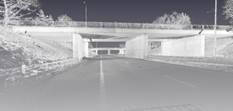 “We managed to scan all the structures in 4 days with a total of over 40 scans taken”, says Harland. “The processing was then done the following week using the FARO SCENE laser scanning software, and the data exported out of SCENE in a format ready to be imported into Autodesk Revit/Autocad. We know this data is of an exceptionally high quality, and can now be used to design and model all new additions or changes to the motorway bridges – it also provides a real snap shot of what is there now as a record forever, in true 3D.”
“We managed to scan all the structures in 4 days with a total of over 40 scans taken”, says Harland. “The processing was then done the following week using the FARO SCENE laser scanning software, and the data exported out of SCENE in a format ready to be imported into Autodesk Revit/Autocad. We know this data is of an exceptionally high quality, and can now be used to design and model all new additions or changes to the motorway bridges – it also provides a real snap shot of what is there now as a record forever, in true 3D.”
With work commencing in March this year, the venture is by no means a small undertaking; “The project is due to be completed in mid-2017,” says Ted, “and I am confident that should there be any further survey work of bridges or structures, laser scanning will certainly be a first choice – not only by the designers but by the site team too.”
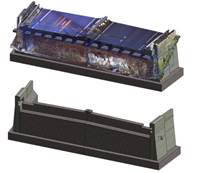 If you want to find out more about Tri-tech, or about the equipment used, visit Tri-tech Surveying direct at: www.tritechsurveys.com or get in touch with Opti-cal www.surveyequipment.com.
If you want to find out more about Tri-tech, or about the equipment used, visit Tri-tech Surveying direct at: www.tritechsurveys.com or get in touch with Opti-cal www.surveyequipment.com.
Special thanks to Ted Harland of Tri-tech Surveys, and Peter Robinson of AECOM, as well as Morgan-Sindall Carillion Joint Venture Group
